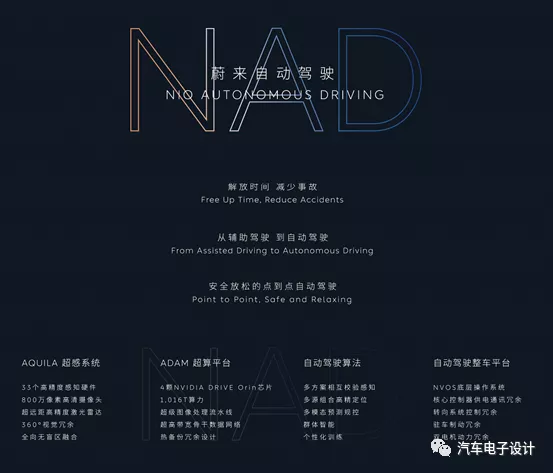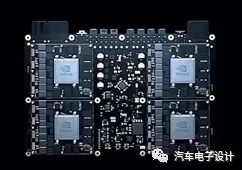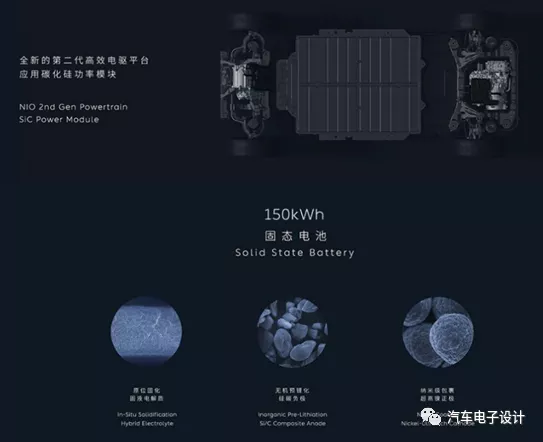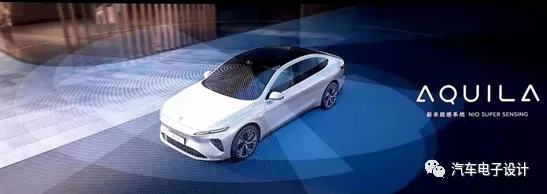Introduction
I have been watching the NIO Day live stream for almost two hours since 18:30. The key announcement this time is the release of the ET 7. NIO’s main focus has shifted from user and service to intelligence, especially in the area of autonomous driving. The main selling point of the ET 7 is its focus on autonomous driving, while the 150 kWh solid-state battery solution is more like a capability demonstration. The overall presentation is brief, so let’s take a closer look. Note: This 70 kWh battery solution has been in use since NIO’s first use and has been used consistently, representing NIO’s dedication.

NIO’s Autonomous Driving Solution
Since the beginning of this year, competition in the field of intelligence, especially in autonomous driving, has become increasingly intense. The main selling point of the ET 7 is also focused on autonomous driving. It consists of three main parts: external sensor configuration, a supercomputing platform, and an automatic driving subscription service.

1) Sensor Configuration The ET 7 has changed the vehicle’s appearance by embedding the front LiDAR on the roof and embedding the two side cameras, forming a horn-shaped configuration. The perception configuration is similar to that of other car companies. However, there is a big paradox here. If the ET 7 revolves around the LiDAR as a key supplemental element and is different from Tesla’s autonomous driving solution, it will be impossible to configure the previous models such as ES 6, ES 8, and EC 6, and a systematic improvement will be needed in the future, which means many changes will need to be made. From the perspective of perception configuration, this move is valuable for the ET 7, but it is indeed very aggressive and creates a clear differentiation point for the product line.

2) Supercomputing Platform Four Nvidia Orin platforms are used here, representing NIO’s official switch from the Intel camp to NV. Two masters are used for mutual validation, one unit is used for redundant backup, and one is dedicated to training iteration.

Due to the use of multiple image sources, to store these raw images, this supercomputer platform needs to be equipped with a particularly large storage space if each second of 8G image data is considered. This strategy requires a lot of algorithm and basic platform development. This time, NIO Autonomous Driving (NAD) adopts a business model that charges a monthly subscription fee of 680 yuan for its self-driving service. By providing standard self-driving hardware and adopting the subscription model ADaaS (AD as a Service), it is also an interesting point.
I believe that most investors value innovation in this field more than anything else. Compared to intelligent cabins and electric suction doors, they value the expansion of this system in all vehicle series in the future.
Powertrain
This new 150 kWh battery system, although the time frame is set for 2023, is a similar concept design for now. Although the supplier has not been revealed, previous leaks have confirmed the feasibility of Qingtao’s design. Overall, importing 400 V SiC to reduce energy consumption is certainly feasible. The 150 kWh is more of a forward-looking capability that gives car owners and investors ample room for imagination. There are many key nodes waiting for us to update in terms of engineering and manufacturing in the next two years.

Summary
Overall, NIO day has released many interesting things. I have made some preliminary summaries. The most important thing is the upgrade and import of autonomous driving technology, which was previously a significant weakness for NIO, but now it has been greatly improved through perception and calculation platform hardware. Of course, specific effects need to be gradually realized by NIO over the next year.
This article is a translation by ChatGPT of a Chinese report from 42HOW. If you have any questions about it, please email bd@42how.com.
